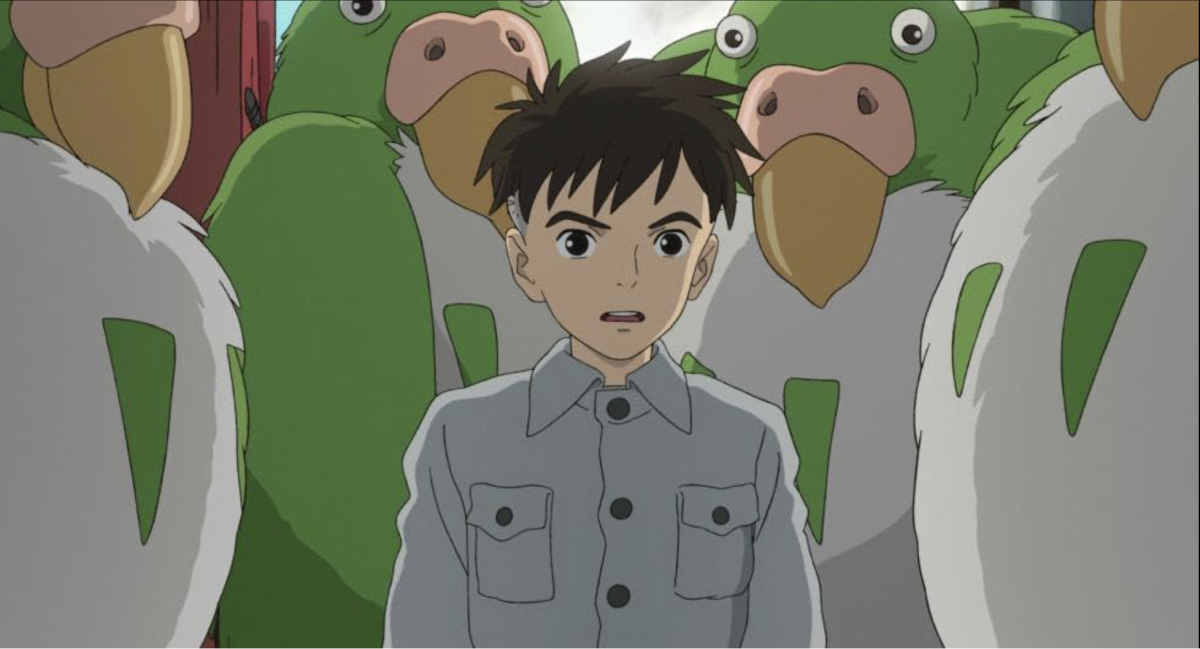Before last month, a decade had elapsed since the maestro of animation, Hayao Miyazaki, blessed the world with a Studio Ghibli feature film. In 2013, Miyazaki released the heartbreaking movie “The Wind Rises,” leaving the global audience captivated by his unparalleled ability to artfully convey pain and sorrow. On Dec. 8, Mayazaki returned with the release of “The Boy and the Heron” in the United States, a cinematic journey that evoked both tears and laughter.
For Studio Ghibli fans and casual moviegoers alike, the film proved to be an emotional rollercoaster of the finest kind. Every detail, from production, directing, writing, music and cinematography, achieved nothing short of perfection. While I could easily divulge a myriad of spoilers and fill pages detailing the profound impact the film had on me, let’s instead delve into the three distinctive elements that elevated it to the status of a true masterpiece — it’s melancholic plot, fantastical visuals and hauntingly beautiful soundtrack.
The plot of the film centers on Mahito Maki, a young boy grappling with the loss of his mother in a fire during World War II. Following this tragedy, Mahito’s father remarries his late mother’s sister and relocates to a rural town. The weight of trauma and grief propels Mahito down a tumultuous path, where he struggles to accept his stepmother. This internal turmoil leads to self-harm as a coping mechanism and way to escape attending school, an unfiltered portrayal of real-life pain and vulnerability.
The narrative takes a transformative turn when a gray heron emerges, transporting Mahito to a fantastical realm. Here, he encounters a younger version of his mother and embarks on a series of adventures alongside various creatures. This journey becomes a pivotal exploration of grief and self-discovery for the young boy.
The animation in the film stands out as a masterpiece, skillfully weaving together elements from previous Studio Ghibli films. Noteworthy callbacks include the mesmerizing rise from the fire, reminiscent of the character in “Howl’s Moving Castle.” The film integrates this imagery, creating a visual tapestry that pays homage to the studio’s rich history.
The greatest detail in the cinematography is the transition between the real world and the fantastical, evoking memories of yet another Ghibli film, “Spirited Away.” The subtle changes in colors and vividness serve as a cinematic brushstroke, effortlessly guiding the audience between realms. In Mahito’s reality, muted by gloom and drab shadows, the hues of his surroundings reflect a somber palette. However, as he ventures into the enchanting realm, a vibrant spectrum appears, symbolizing the vivid journey of self-discovery that unfolds before him.
Each frame is meticulously crafted, from the lush, verdant forests to the shimmering waters of tranquil lakes, transforming the viewing experience into a captivating journey. The animation of both whimsical and horrifying creatures serves as the crowning touch to the visual masterpiece. From large birds that attempt to steal our souls to tiny, adorable marshmallow-like creatures, audience members find themselves captivated, eagerly scanning every corner of the screen in anticipation of the next visual.
The pièce de résistance that seamlessly binds the movie together undoubtedly lies in its musical score. Crafted by the esteemed Joe Hisaishi, the soundtrack imparts an emotional resonance to every scene, leaving an enduring impact well beyond the rolling credits. Hisaishi’s composition acts as an enchanting companion to the already stunning visuals, elevating the storytelling to new heights and enveloping audiences in the heartfelt and magical world of “The Boy and the Heron.”
As I left the movie theater, a single thought crossed my mind — “A second viewing is a must.” Beyond the enthralling visuals, the story’s mystery and sadness unveiled layers open to interpretation. Numerous unanswered questions linger, stoking the desire to relive the journey alongside Mahito as he courageously unraveled the depths of self-discovery.



